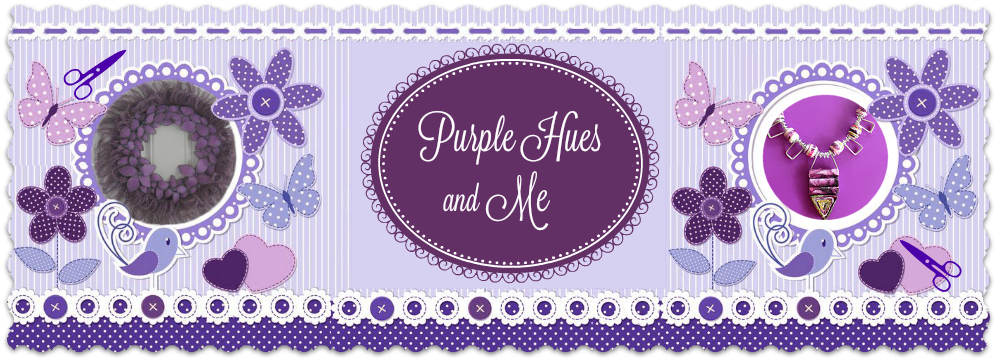Hey all! I'd like to introduce you to the Hellebores plant! Some may know it as the Christmas rose that's popular around the holidays. When most flowering plants are lying dormant during the winter months, the Hellebores is blooming like no other. The plants are surprisingly frost-resistant and many are evergreen ranging in beautiful hues from white to purpleblack! Sounds amazing, doesn't it!
Here's a little bit about the hellebores. What you see when looking at the hellebores are not petals but sepals - five of them which are sometimes spotted and splashed with beautiful colors, too! The function of the sepals is to protect the flower part which is in the center like a cluster of stamens and small petals. Check them out in the photo!
That being said, I found inspiration in creating a version of the hellebores out of foam sheets - one of my favorite crafting mediums. I love making flowers with foam sheets like here and here. Take a look at this hellebores close-up: Can you imagine creating something similar with foam sheets for this month's Creative Craft Blog Hop?
Sepals (A) normally form outside of petals as a protection and support of the bud and flower. There are usually 5 sepals. The stamens (B) are the male part of the flower and are made up of 2 parts, the long white filament and the anther that sits on top holding the pollen. There can be up to 150 stamens per flower. The stamens surround the female part of the flower, the carpel (C). Fertilization of the carpels can be by insects, bees or wind. Replacing the petal in the case of Hellebores are small nectaries (D) that sit at the base of the sepals and provide food for pollinators.
Diagram of the parts of a Hellebore flower. Gather:
Foam Sheets - 8"x12" Thin (1-2 mm)
Floral stem wire
Hot glue gun and glue sticks
Faux stamen
Duct tape
Sepal (petal) pattern
Acrylic paint
Chalk pastels
Leaf mold (optional)
Iron, scissors, straight pin, skewer stick, sponge, water
Instructions:
It's best to use the thinnest foam sheets you can find. The ones found in the children's craft section at the craft stores are a bit thick to make flowers. Luckily, I had a pack of thin foam sheets I had gotten from the Dollar Tree a couple of years ago but I don't think they carry this any longer. I haven't been able to find any for quite sometime now. Too bad there wasn't any purple in the bunch, but it did have pink, yellow and green sheets - enough to show you how to make a hellebores.
Let's begin with making the carpel (center) by taking a strip of yellow foam sheet about a half inch wide and six inches long. Fold the strip in half and make thin cuts along the strip leaving a border at the top.
Then apply hot glue along the border . . .
and begin twirling the foam strip onto a floral stem wire - and applying hot glue to the end to seal. This is the female part of the hellebores called the carpel and is surrounded by the stamen which I'm showing you how to make next.
Take a 2" strip of duct tape and place faux stamen on top of the adhesive backing leaving the ends clear. Then cut along the center and . . .
wrap the adhesive piece around the foam (carpel) center.
To make the sepals, fold over a foam sheet four times to create space to outline a pattern 2 1/4"x1 3/4" using the tip of a skewer stick. You will need to cut out at least 10 to make two hellebores.
using a damp sponge rubbed over the end of a chalk pastel to tint with additional color.
Seal colors and soften the foam by laying each sepal on an iron plate for a few seconds.
Wrap the base and stem wire in floral tape.
Then begin gluing sepals on, one at a time . . .
until all . . .five are attached.
Then begin wrapping the base and stem wire with floral tape.Add leaf shapes by cutting out green rectangle 4"x2 3/4" pieces . . .
and placing on an iron for a few seconds and quickly pressing down on a leaf mold to give the foam texture (optional) Click here to make leaves without a mold.Then cut out the textured piece in a leaf shape . . .
and add floral stems to center back using hot glue. Then connect the leaves to the main hellebores stem wire using . . .
floral tape.Welcome to our monthly Creative Craft Blog Hop created by Chloe @ Celebrate & Decorate and Andrea @ Design Morsels! I've teamed up with a talented group of creative bloggers to bring you lots of wonderful ideas and inspirations!
Be sure to have fun and get inspired by all of the wonderful creations this month by clicking on the links below!






















































Beautiful Gail! We have some Lenten Roses blooming now but ours are the white variety. I’m not familiar with the foam sheets you used and love how you added the leaf texture with your iron! Happy to be hopping with you again. ♥
ReplyDeleteThanks, Mary! And yes, Lenten Roses are part of the Hellebores family, too! They got the "Lenten" name from blooming around the time of Lent. Happy to be hopping with you, too! I love this creative blog hop!
DeleteGail, you continue to amaze me with your beautiful floral creations! These are gorgeous! Blessings, Cecilia @My Thrift Store Addiction
ReplyDeleteGail, your flower DIY projects are amazing. The detail is what makes them look so real.
ReplyDeleteI've never heard of the Hellebores plant before. Have I been living under a rock?! Your faux version is stunning and so easy to keep 'alive' - lol.
ReplyDeleteWow how beautiful. You added every detail to make them look real. AMAZING!
ReplyDeleteWow! Gail, you just keep coming up with more and more creative DIY blooms! I really want to try some of the paper ones! These are gorgeous, great job!
ReplyDeleteGail, hellebores are my one of my favorite winter plants. They give us hope during the dark, long winter.
ReplyDeleteYour reproductions are just amazing. Even before you artfully added the petals and leaves the center was a work of art.
You are truly gifted.
Wow, those look like they took a long time! What pretty flowers, both real and yours.
ReplyDeleteThese are amazing Gail! You always wow me with your patience and attention to details, the leaf mold is crazy brilliant! The stamens look so real, and how clever to use a pin instead of a paint brush for detailing. These are simply adorable! I’ve not worked with craft foam, it looks like tons of fun!
ReplyDeleteGail, nobody makes more beautiful faux flowers than you! These are gorgeous! And, what a detailed and instructive tutorial. Thanks so much for all the hard work it must have taken. Pinned!
ReplyDeleteWow these look better than the real thing. They turned out great. I've been wanting to try making paper flowers but you have to be really talented do to them it look like. Thanks for being in the hop.
ReplyDeleteOh my gosh I was doing a double take, I kept thinking they were real, scroll back, nope, yep, nope, ... they are so awesome. Thanks for sharing.
ReplyDeleteYour flowers are just gorgeous, Gail. They look so realistic! I love your attention to detail. I'm intrigued with your leaf mold...I've never seen one of those before. Thanks for sharing the great tutorial. Pinned!
ReplyDeleteOMG! Your flowers are so pretty and look realistic! I love the color of the petals. Beautiful work, Gail!!!
ReplyDeleteWow! Gail, I can't get over how realistic these flowers are! You are so talented and creative. It was fun to hop with you. Pinned!
ReplyDeleteYou are amazing! Those are crafted so well! They really look realistic!
ReplyDeleteBuying locally is crucial if you're working on a restoration job. Your plants' success or failure depends on their survival, and you won't have the time or personnel to do that. tree nursery
ReplyDeleteCouples generally learn how to express their feelings and anxieties without being angry or resentful towards their partners after a counselor helps them create or enhance their communication channels. Communication is crucial in all aspects of life, including marriage and the family. Success counseling
ReplyDeleteI'm continually amazed by the excellence of your blog. Your dedication to delivering top-notch content truly shines.Ley de Divorcio de Nueva York Propiedad Matrimonial
ReplyDeleteThis comment has been removed by the author.
ReplyDelete
ReplyDeleteThis was a really interesting read. Thank you for sharing!